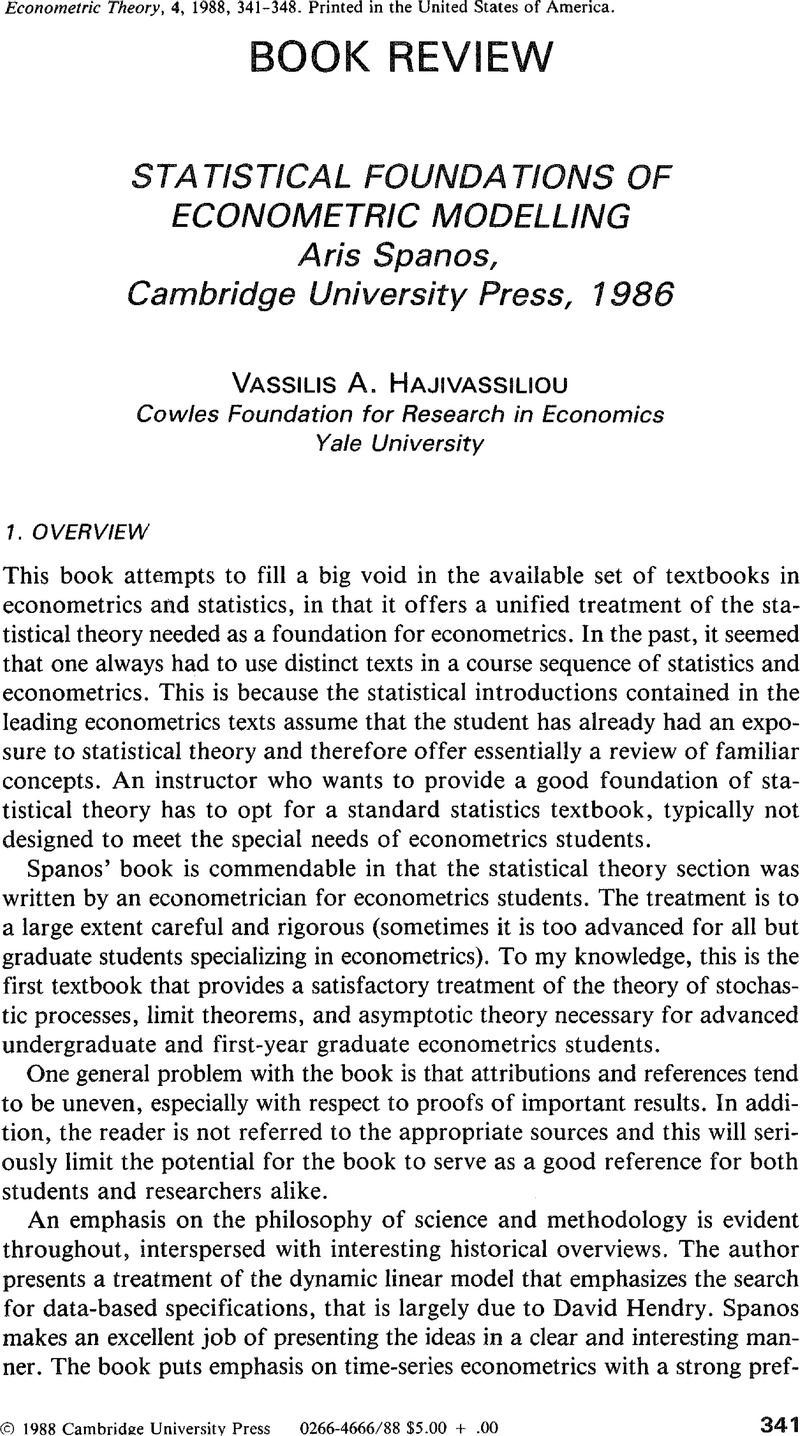No CrossRef data available.
Article contents
Statistical Foundations of Econometric Modelling Aris Spanos, Cambridge University Press, 1986
Review products
Statistical Foundations of Econometric Modelling Aris Spanos, Cambridge University Press, 1986
Published online by Cambridge University Press: 18 October 2010
Abstract
An abstract is not available for this content so a preview has been provided. Please use the Get access link above for information on how to access this content.

Information
- Type
- Book Review
- Information
- Copyright
- Copyright © Cambridge University Press 1988
References
REFERENCES
1. Cox, D.R. & Hinkley, D.V.. Theoretical statistics. London: Chapman and Hall, 1974.10.1007/978-1-4899-2887-0Google Scholar
2. Durbin, J., Maximum-likelihood estimation of the parameters of a system of simultaneous regression equations. London School of Economics working paper, presented at the Copenhagen meetings of the Econometric Society (1963).Google Scholar
3. Engle, R.F. & Granger, C.W.J.. Co-integration and error correction: representation, estimation, and testing. Econometrica 55 (1987): 251–276.10.2307/1913236Google Scholar
4. Hansen, L.P. Large sample properties of generalized method of moments estimators. Econometrica 50 (1982): 1029–1054.10.2307/1912775Google Scholar
5. Hendry, D.F. The structure of simultaneous equations estimators. Journal of Econometrics 4 (1976): 51–88.10.1016/0304-4076(76)90017-8Google Scholar
8. Maddala, G.S. Limited dependent and qualitative variables in econometrics. New York: Cambridge University Press, 1983.10.1017/CBO9780511810176Google Scholar
9. Phillips, P.C.B. Finite sample theory and the distributions of alternative estimators of the marginal propensity to consume. Review of Economic Studies 47 (1980): 183–224.10.2307/2297109Google Scholar
10. Phillips, P., Time, C.B. series regression with unit roots. Econometrica 55 (1987): 277–302.10.2307/1913237Google Scholar
12. Quandt, R.E. Econometric disequilibrium models. Econometric Reviews 1 (1982): 1–64.10.1080/07311768208800001Google Scholar
13. Rothenberg, T.J. Approximating the distribution of econometric estimators and test statistics. In Griliches, Z. & Intrilligator, M.D. (eds.), Handbook of Econometrics, Vol. II, Chapter 15. Amsterdam: North Holland, 1984.Google Scholar
14. Sargan, J.D. Econometric estimators and the Edgeworth approximation. Econometrica 44 (1976): 421–448; erratum, 45: 272.10.2307/1913972Google Scholar
15. Taylor, W.E. Small sample properties of a class of two-stage Aitken estimators. Econometrica 45 (1977): 497–508.10.2307/1911224Google Scholar
16. Taylor, W.E. The heteroscedastic linear model: exact finite sample results. Econometrica 46 (1978): 663–675.10.2307/1914239Google Scholar
17. White, H. & Domovitz, I.. Nonlinear regression with dependent observations. Econometrica 52 (1984): 643–661.10.2307/1911465Google Scholar

